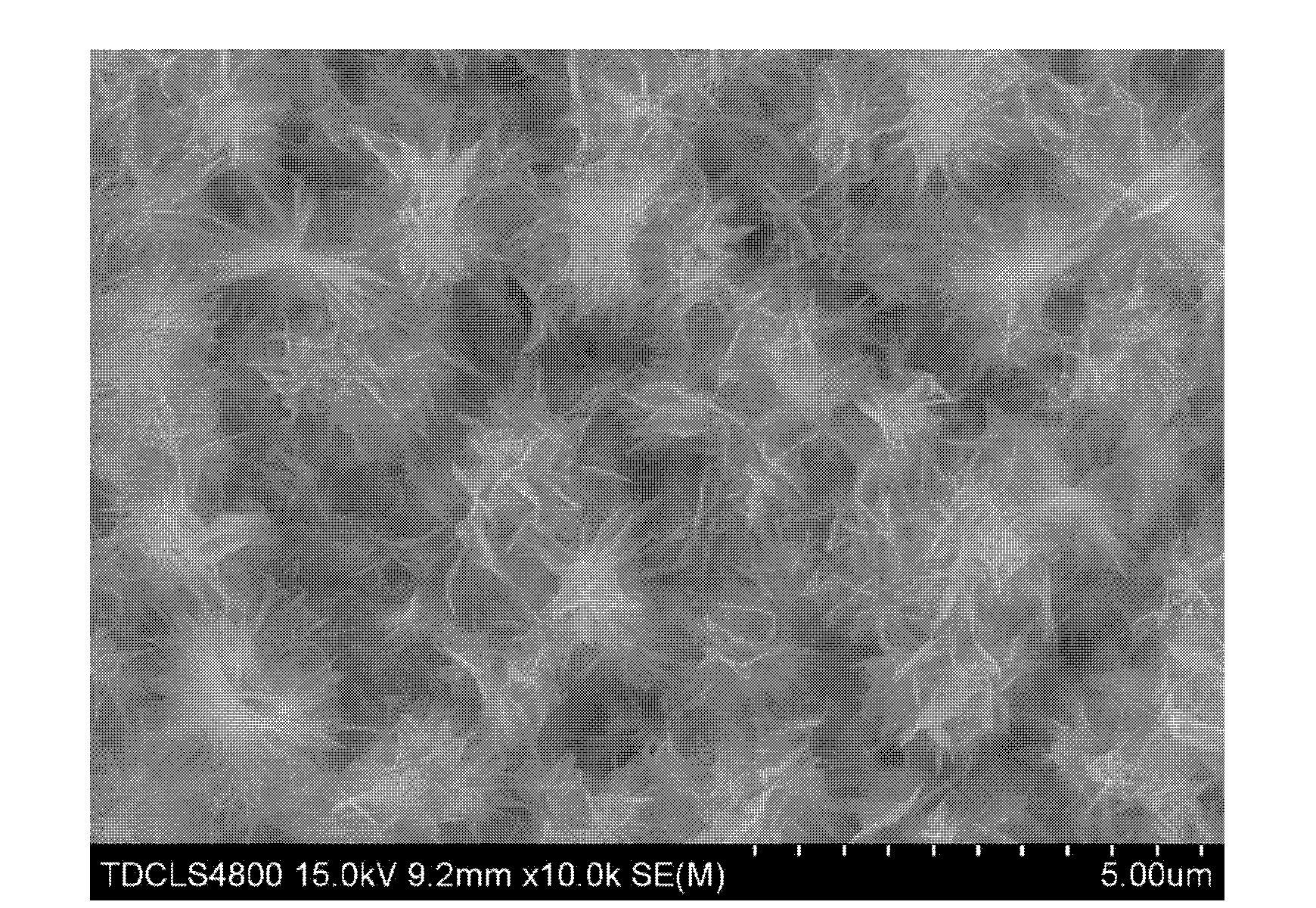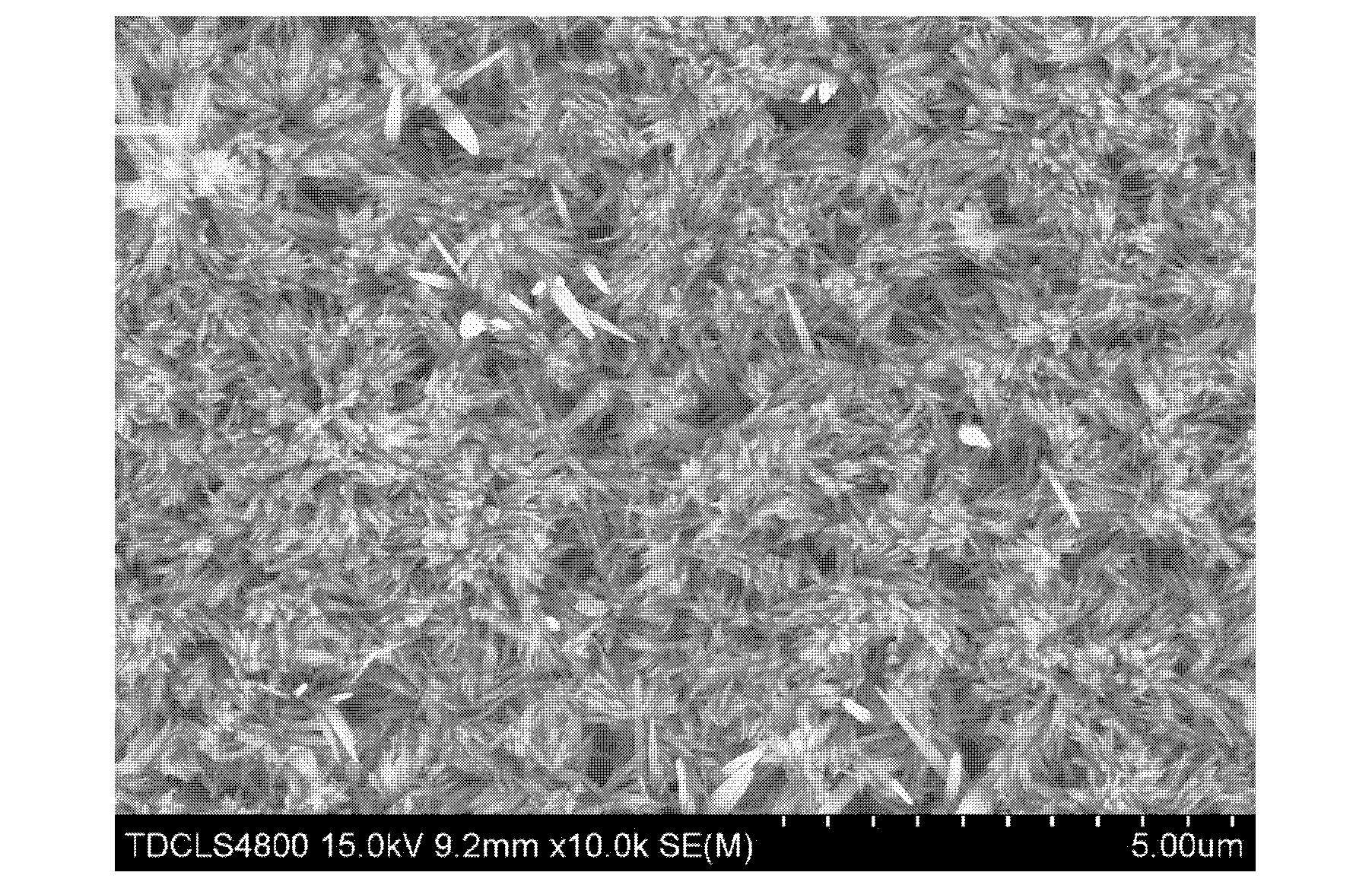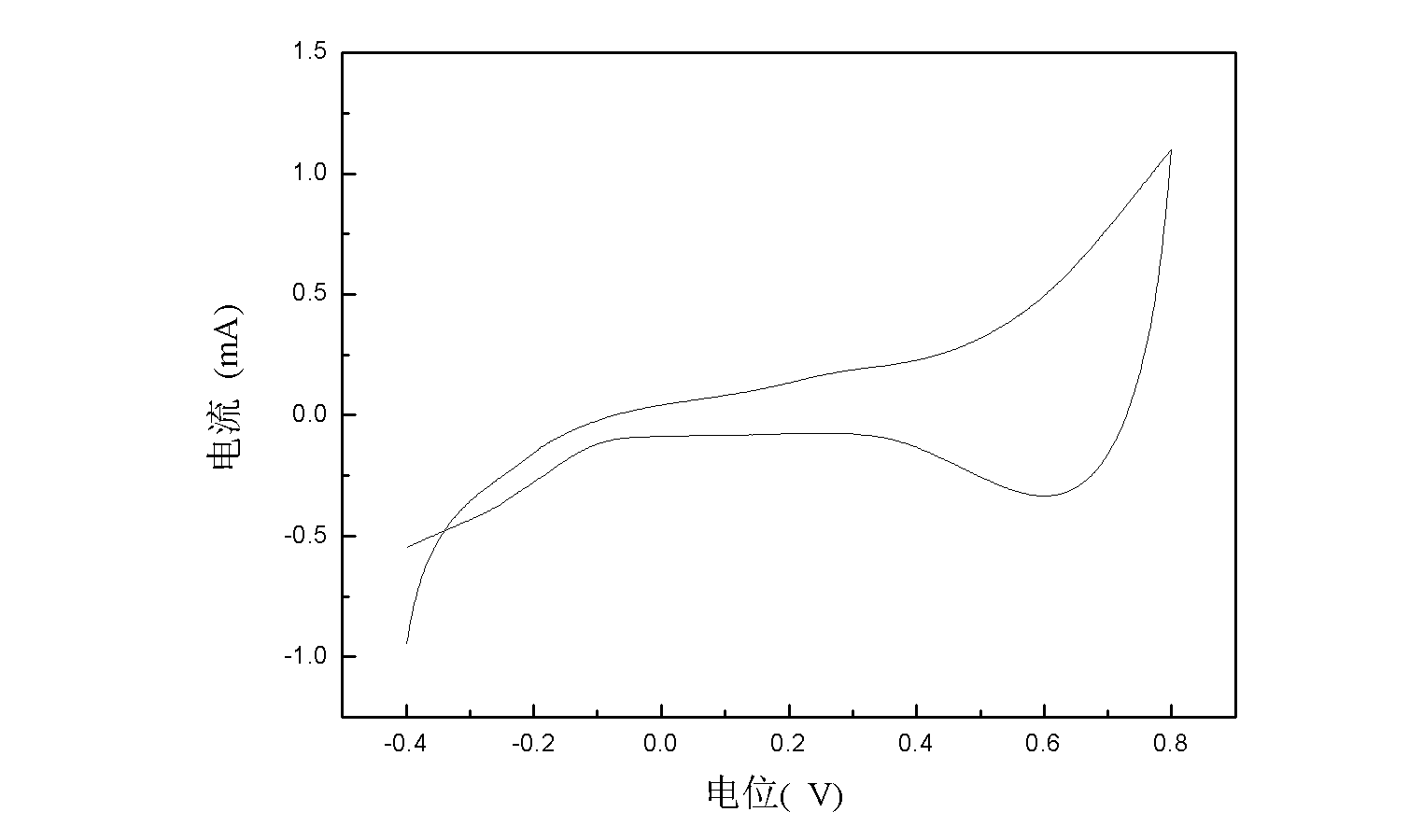Three-dimensional copper oxide nanometer flower-based chip enzyme-free glucose sensor electrode as well as preparation method and application thereof
A technology of glucose sensor and copper oxide, which is applied in instruments, scientific instruments, and material analysis through electromagnetic means, can solve the problems of not easy to respond to current, slow overall dynamics, low sensitivity, etc., and achieve strong anti-interference ability and linearity The effect of wide range and good application prospect
- Summary
- Abstract
- Description
- Claims
- Application Information
AI Technical Summary
Problems solved by technology
Method used
Image
Examples
Embodiment 1
[0021] Take a copper foil sheet with a thickness of 0.2mm, rinse it repeatedly with distilled water and deionized water, and put it in an oven to dry after ultrasonication. Prepare a KOH solution with a mass fraction of 2%, let it stand for 10 minutes, take the prepared solution in a beaker, place it in a constant temperature water bath, adjust the temperature to 30°C, put the cleaned and dried copper foil in the beaker, and let it stand After standing for 3 days, the samples were removed, rinsed slowly with distilled water and again with deionized water, and dried. Observing the dried three-dimensional copper oxide nanoflowers under a scanning electron microscope, it can be seen that the three-dimensional copper oxide nanoflowers are evenly distributed on the electrode surface, and the diameter of a single nanoflower is 10-20 μm. Such as figure 1 shown.
Embodiment 2
[0023] Take a copper foil sheet with a thickness of 0.3mm, wash it repeatedly with distilled water and deionized water, and put it in an oven to dry after ultrasonication. Configure a KOH solution with a mass fraction of 3%, let it stand for 10 minutes, take the prepared solution in a beaker, place it in a constant temperature water bath, adjust the temperature to 40°C, put the cleaned and dried copper foil in the beaker, and let it stand After 6 days, the samples were removed, rinsed slowly with distilled water and again with deionized water, and dried. Observing the dried three-dimensional copper oxide nanoflowers under a scanning electron microscope, it can be seen that the three-dimensional copper oxide nanoflowers are evenly distributed on the electrode surface, the nanoflowers are closely packed, and the shape of a single nanoflower is clear. The diameter of a single nanoflower is between 10 -20 μm. Such as figure 2 shown.
[0024] The electrochemical test adopts a t...
Embodiment 3
[0026] Change the thickness of the copper foil in Example 2 to a copper foil sheet of 0.5mm, wash it repeatedly with distilled water and deionized water, and put it in an oven to dry after ultrasonication. Prepare a KOH solution with a mass fraction of 5%, let it stand for 10 minutes, take the prepared solution in a beaker, place it in a constant temperature water bath, adjust the temperature to 30°C, put the cleaned and dried copper foil in the beaker, and let it stand After 6 days, the samples were removed, rinsed slowly with distilled water and again with deionized water, and dried. The dried three-dimensional copper oxide nanoflowers were observed under a scanning electron microscope to obtain a picture similar to Example 3. The three-dimensional copper oxide nanoflowers were evenly distributed on the electrode surface, the nanoflowers were closely packed, and the shape of a single nanoflower was clear. The diameter of a single nanoflower was At 10-20 μm.
PUM
| Property | Measurement | Unit |
|---|---|---|
| diameter | aaaaa | aaaaa |
| thickness | aaaaa | aaaaa |
| particle diameter | aaaaa | aaaaa |
Abstract
Description
Claims
Application Information
 Login to View More
Login to View More - R&D
- Intellectual Property
- Life Sciences
- Materials
- Tech Scout
- Unparalleled Data Quality
- Higher Quality Content
- 60% Fewer Hallucinations
Browse by: Latest US Patents, China's latest patents, Technical Efficacy Thesaurus, Application Domain, Technology Topic, Popular Technical Reports.
© 2025 PatSnap. All rights reserved.Legal|Privacy policy|Modern Slavery Act Transparency Statement|Sitemap|About US| Contact US: help@patsnap.com



